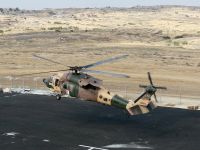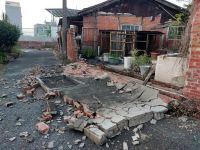Geophysical procedures:
These are relatively inexpensive methods of obtaining large quantities of data in short periods of time. They involve the measurements of the petrophysical properties of an area of land.
While geophysical tools do not find petroleum directly, they can indicate whether the properties of a particular area are similar to other petroleum-producing areas, or to non-producing areas.
The most commen geophysical techniques include:
Remote-sensing techniques: Image analyses of either air photos or satellite images, are used most often as a tool to map strata and structures rapidly in relatively remote areas. Recently, multi-band spectral analyses of images from petroliferous basins have shown the some fields can be detected if petroleum has leaked to the surface in sufficient quantities to affect the reflective properties either of the overlying rocks, soil or plants
Gravity and magnetic surveys: These are used to determine sedimentary thicknesses in basins, as well as anomalies that may indicated buried structures that do not manifest themselves on the surface. They usually do not yield enough resolution to determine the nature of structures or evaluate their petroleum-trapping potentials.
Seismic Surveys: These are are used both for recognizant purposes and for delineating structures, stratigraphic boundaries, and, in some cases, the extent of petroleum (usually gas) containing reservoirs. Reflection seismic surveys are used almost exclusively in petroleum exploration (as opposed to refraction methods).
The technique is based on detecting reflective surfaces between rocks with different acoustic impedance. These differences are caused by variations in rock types, porosities, pore fluid densities, and thicknesses of units.
Two-dimensional surveys have been routine for nearly 40 years, but during the past 20 years, as high-speed computers have become available that can process large amounts of mathematical data rapidly, three-dimensional surveys became commonplace. These surveys yield higher resolution of the morphology of structures and potential petroleum reservoirs. Today an advanced method the four-dimensional survey, which adds the time dimension added.
Geophysical well logs: These are petrophysical measurement made in a bore hole, usually after the well, or a portion of the well has been drilled. Most logs are comprised of electrical properties, radiometric properties and acoustic properties.
These measurements are used to either calculate, or estimate rock properties such as, unit thickness, porosity, fluid content, and internal structures. When combined with data from other exploration techniques, well logs can be used to delineate the thickness and qualities of a reservoir rock, as well as the relative proportions of fluid phases resident in pores, such as water, oil, and gas.
Geochemical procedures:
These techniques are used to evaluate the petroleum-generating potential of potential source rocks, "finger print" petroleum so that they can be related back to a potential source rock and predict the porosity-permeability destruction or enhancement of a potential reservoir rock during it's post-burial (diagenetic) history.
These techniques include the determination of stable isotopic ratios (12 Carbon/13Carbon), trace elemental analyses, saturate:aromatic ratio determinations, compositional analyses of source rock organic constituents, petroleum fractions, and mineral species within reservoir rocks.
Results are often both temperature and time dependant, therefore plotting them on a burial history, or geohistory, diagram, allows for temporal comparisons between various geochemical events that may either enhance or preclude petroleum accumulation potentials.
© 2000 Mena Report (www.menareport.com)







